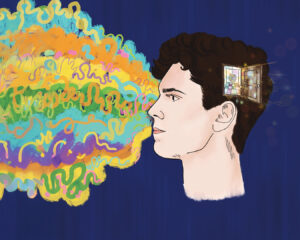
When most people think of COVID-19 today, they envision a brief illness akin to a common cold—a few days of fever, sore throat, or cough before recovery. However, for many individuals, the story does not end there. Long COVID, defined by the World Health Organization (WHO) as symptoms persisting for at least three months post-infection, has emerged as a significant and enduring aspect of the pandemic.
While much of the existing research has concentrated on cataloging symptoms such as fatigue, brain fog, and breathlessness, the impact on daily life remains underexplored, particularly in Australia. This gap in understanding is precisely what a new study, published today, seeks to address. The findings demonstrate that long COVID is not merely uncomfortable or inconvenient; it can profoundly limit daily activities and prevent individuals from fulfilling both personal and professional responsibilities.
Understanding Long COVID
Long COVID affects approximately 6% of those who contract the virus, with over 200 symptoms reported. For some individuals, these symptoms persist for a few months, while for “long haulers,” they can extend into years. The variability in symptoms from person to person complicates the measurement of the problem’s magnitude, spurring ongoing debates about the nature, causes, and even the reality of long COVID.
Nevertheless, mounting evidence underscores the seriousness of long COVID. Studies have confirmed that it reduces quality of life to levels comparable to chronic fatigue syndrome, stroke, rheumatoid arthritis, and Parkinson’s disease.
Insights from the Australian Study
The recent study surveyed 121 adults across Australia who are living with long COVID. These individuals contracted COVID-19 between February 2020 and June 2022, with most participants aged between 36 and 50. Although the majority were never hospitalized and managed their illness at home, they continue to struggle with daily activities long after the initial infection.
To quantify the impact, participants completed two widely recognized health research surveys: the WHO Disability Assessment Schedule (WHODAS 2.0) and the Short Form Health Survey (SF-36). These tools capture personal experiences and the real-world implications of symptoms, offering insights beyond what medical tests can reveal.
People with long COVID reported worse disability than 98% of the general Australian population. A total of 86% met the threshold for serious disability compared to 9% of Australians overall.
On average, individuals experienced difficulties with daily activities on approximately 27 days per month and were unable to function on about 18 days. While basic tasks such as eating or dressing were less affected, more complex activities like housework and socializing were severely impacted. Although many could meet basic needs, their ability to contribute to their homes, workplaces, and communities was significantly limited.
Implications and International Comparisons
International research mirrors these findings. A study spanning 13 countries revealed similar disability levels, noting that women often reported higher disability scores than men. The multifaceted nature of long COVID disability, which can fluctuate over time, challenges traditional healthcare models for chronic conditions.
One crucial insight from the study is the importance of self-reported outcomes. Long COVID lacks a definitive diagnostic test, and patients often encounter skepticism from healthcare professionals regarding their symptoms and their impact. Yet, the study found that individuals’ self-assessments of recovery were strong predictors of their disability and quality of life.
This demonstrates that self-reports are not merely anecdotal; they are valid and reliable health indicators, capturing what medical tests cannot.
For instance, fatigue extends beyond mere tiredness; it can result in losing concentration while driving, abandoning hobbies, or withdrawing from cherished friendships. The study illustrates how long COVID disrupts futures, fractures connections, and creates daily struggles that reverberate through families, workplaces, and communities.
Next Steps: Addressing the Long COVID Crisis
Evidence presented to the 2023 parliamentary long COVID inquiry estimates that hundreds of thousands of Australians are living with long COVID. Disadvantaged communities are particularly vulnerable to the cascading effects of this condition. Ignoring the scale and severity of long COVID risks exacerbating inequality and intensifying its impact.
By developing services informed by lived experiences, society can work towards restoring not only health but also dignity and participation in daily life for those affected by long COVID. Rehabilitation and support services must extend beyond basic medical care. Individuals need assistance managing fatigue, such as “pacing” and conserving energy by avoiding overexertion. Workplaces should accommodate those with long COVID by reducing hours, redesigning job demands, and offering flexible leave. Additionally, support is needed to help rebuild social connections.
All of this requires thoughtful assessment and treatment of individuals with long COVID. Listening to patients and valuing their experiences is a crucial first step in addressing this complex and evolving health challenge.
We acknowledge the contributions of the co-authors of the research mentioned in this article: Tanita Botha, Fisaha Tesfay, Sara Holton, Cathy Said, Martin Hensher, Mary Rose Angeles, Catherine Bennett, Bodil Rasmussen, and Kelli Nicola-Richmond.
Courtesy of The Conversation. This material from the originating organization/author(s) might be of the point-in-time nature, and edited for clarity, style, and length. Mirage.News does not take institutional positions or sides, and all views, positions, and conclusions expressed herein are solely those of the author(s).




